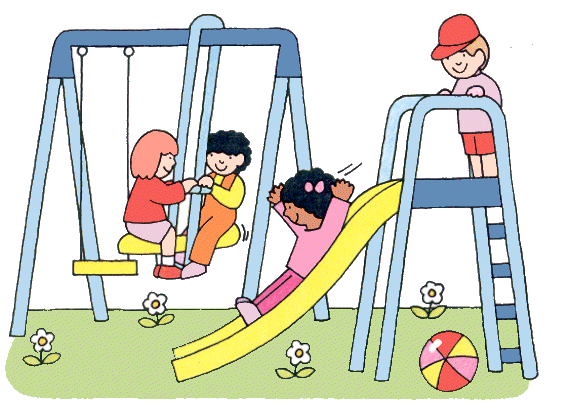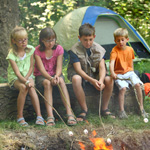 The warmth, light and smells of an outdoor campfire make it an especially memorable activity for children. Anyone who has ever told ghost stories or roasted marshmallows outdoors knows how much fun it can be. While you enjoy the campfire, always keep watch over the site and never let children alone while the fire is burning. Use long sticks or skewers to roast frankfurters or marshmallows. Do not allow any running or roughhousing near the fire.
The warmth, light and smells of an outdoor campfire make it an especially memorable activity for children. Anyone who has ever told ghost stories or roasted marshmallows outdoors knows how much fun it can be. While you enjoy the campfire, always keep watch over the site and never let children alone while the fire is burning. Use long sticks or skewers to roast frankfurters or marshmallows. Do not allow any running or roughhousing near the fire.
Month: June 2013
Adult Obesity
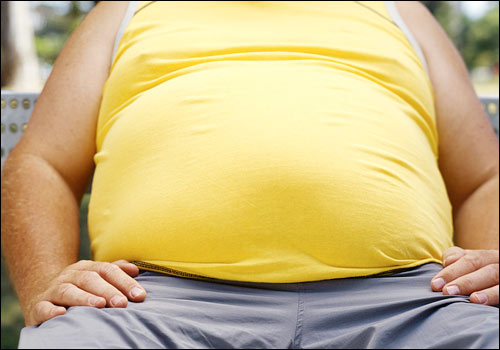 Obesity is common, serious, and costly. In 2009, about 2.4 million more adults were obese than in 2007. This epidemic has affected every part of the United States. In every state, more than 15% of adults are obese, and in nine states, over 30% of adults are obese. The medical care costs of obesity in the United States are staggering. In 2008 dollars, these costs totaled about $147 billion. More efforts are needed, and new federal initiatives are helping to change our communities into places that strongly support healthy eating and active living.
Obesity is common, serious, and costly. In 2009, about 2.4 million more adults were obese than in 2007. This epidemic has affected every part of the United States. In every state, more than 15% of adults are obese, and in nine states, over 30% of adults are obese. The medical care costs of obesity in the United States are staggering. In 2008 dollars, these costs totaled about $147 billion. More efforts are needed, and new federal initiatives are helping to change our communities into places that strongly support healthy eating and active living.
Fireworks Safety Tips
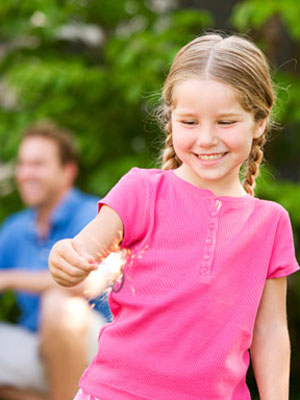 Fireworks can result in severe burns, scars and disfigurement that can last a lifetime.
Fireworks can result in severe burns, scars and disfigurement that can last a lifetime.
Fireworks that are often thought to be safe, such as sparklers, can reach temperatures above 1000 degrees Fahrenheit, and can burn users and bystanders.
Families should attend community fireworks displays run by professionals rather than using fireworks at home.
via Summer Safety Tips.
Construction’s “Fatal Four”
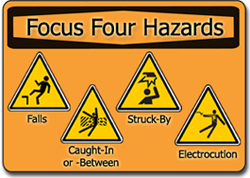 Out of 4,188* worker fatalities in private industry in calendar year 2011, 738 or 17.6% were in construction. The leading causes of worker deaths on construction sites were falls, followed by electrocution, struck by object, and caught-in/between. These “Fatal Four” were responsible for nearly three out of five (56%) construction worker deaths in 2011*, BLS reports. Eliminating the Fatal Four would save 419 workers’ lives in America every year.
Out of 4,188* worker fatalities in private industry in calendar year 2011, 738 or 17.6% were in construction. The leading causes of worker deaths on construction sites were falls, followed by electrocution, struck by object, and caught-in/between. These “Fatal Four” were responsible for nearly three out of five (56%) construction worker deaths in 2011*, BLS reports. Eliminating the Fatal Four would save 419 workers’ lives in America every year.
- Falls – 259 out of 738 total deaths in construction in CY 2011 (35%)
- Electrocutions – 69 (9%)
- Struck by Object – 73 (10%)
- Caught-in/between – 18 (2%)
Facts about Alcohol and Drug Abuse
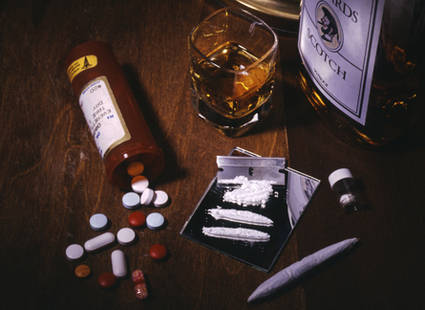 Substance Dependency is a Disease
Substance Dependency is a Disease
Alcohol is such a big part of American life today that we rarely stop to consider our pattern of drinking. We drink wine with dinner, or have a few drinks after work, or even a few beers while watching a ball game, but when a pattern of drinking begins to emerge, it can become a problem.
Drug use in America is also more commonplace than it once was. In today’s teenage population over 90 percent have used alcohol. Over 50 percent have used marijuana, 17 percent admit to trying cocaine and 12.5 percent have used some form of hallucinogen.
Machine Safety is Critical
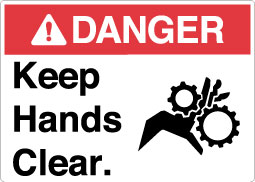 Machine safety is critical for worker safety, because machines have many ways to injure workers: Many machines have moving parts, sharp edges, and hot surfaces with the potential to cause severe workplace injuries such as crushed fingers or hands, amputations, burns, or blindness. Safeguards are essential for protecting workers from these preventable injuries. Any machine part, function, or process that might cause injury must be safeguarded. When the operation of a machine may result in a contact injury to the operator or others in the vicinity, the hazards must be eliminated or controlled.
Machine safety is critical for worker safety, because machines have many ways to injure workers: Many machines have moving parts, sharp edges, and hot surfaces with the potential to cause severe workplace injuries such as crushed fingers or hands, amputations, burns, or blindness. Safeguards are essential for protecting workers from these preventable injuries. Any machine part, function, or process that might cause injury must be safeguarded. When the operation of a machine may result in a contact injury to the operator or others in the vicinity, the hazards must be eliminated or controlled.
via CDC – Machine Safety – NIOSH Workplace Safety and Health Topic.
Why is exercise important?
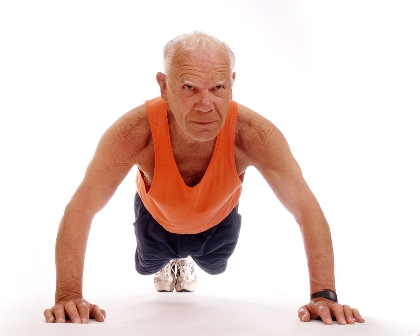 Have you ever heard the expression “use it or lose it”? Its true! If you don’t use your body, you will surely lose it. Your muscles will become flabby and weak. Your heart and lungs wont function efficiently. And your joints will be stiff and easily injured. Inactivity is as much of a health risk as smoking!
Have you ever heard the expression “use it or lose it”? Its true! If you don’t use your body, you will surely lose it. Your muscles will become flabby and weak. Your heart and lungs wont function efficiently. And your joints will be stiff and easily injured. Inactivity is as much of a health risk as smoking!
- Helps Prevent Diseases-Our bodies were meant to move — they actually crave exercise. Regular exercise is necessary for physical fitness and good health. It reduces the risk of heart disease, cancer, high blood pressure, diabetes and other diseases. It can improve your appearance and delay the aging process.
- Improves Stamina-When you exercise, your body uses energy to keep going. Aerobic exercise involves continuous and rhythmic physical motion, such as walking and bicycling. It improves your stamina by training your body to become more efficient and use less energy for the same amount of work. As your conditioning level improves, your heart rate and breathing rate return to resting levels much sooner from strenuous activity.
- Strengthens and Tones-Exercising with weights and other forms of resistance training develops your muscles, bones and ligaments for increased strength and endurance. Your posture can be improved, and your muscles become more firm and toned. You not only feel better, but you look better, too!
- Enhances Flexibility-Stretching exercises are also important for good posture. They keep your body limber so that you can bend, reach and twist. Improving your flexibility through exercise reduces the chance of injury and improves balance and coordination. If you have stiff, tense areas, such as the upper back or neck, performing specific stretches can help “loosen” those muscles, helping you feel more relaxed.
- Controls Weight-Exercise is also a key to weight control because it burns calories. If you burn off more calories than you take in, you lose weight. Its as simple as that.
- Improves Quality of Life-Once you begin to exercise regularly, you will discover many more reasons why exercise is so important to improving the quality of your life. Exercise reduces stress, lifts moods, and helps you sleep better. It can keep you looking and feeling younger throughout your entire life.
Nonfatal Injury and Illness in Construction
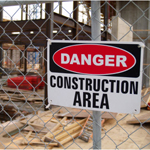 There were 3.3 million nonfatal injuries and illnesses reported across all industries in 2009, of which almost 95 per cent were injuries and just over 5 per cent were illnesses. More than 9 per cent of the nonfatal illnesses and injuries requiring days away from work were experienced by construction workers (92,540). Construction workers reported 4.3 nonfatal injuries and illnesses per 100 full-time workers.
There were 3.3 million nonfatal injuries and illnesses reported across all industries in 2009, of which almost 95 per cent were injuries and just over 5 per cent were illnesses. More than 9 per cent of the nonfatal illnesses and injuries requiring days away from work were experienced by construction workers (92,540). Construction workers reported 4.3 nonfatal injuries and illnesses per 100 full-time workers.
Falls accounted for more than one in every five of these injuries and illnesses (22%). Construction laborers experienced the seventh-highest rate of nonfatal injury and illness requiring days away from work of all occupations (382 per 10,000 full-time workers). Hispanic/Latino workers experienced nonfatal injuries and illnesses disproportionately, with almost one-fifth of cases (19%).
via CDC – Construction Safety and Health – NIOSH Workplace Safety and Health Topic.
Playground Safety
- The playground should have safety-tested mats or loose-fill materials (shredded rubber, sand, wood chips, or bark) maintained to a depth of at least 9 inches (6 inches for shredded rubber). The protective surface should be installed at least 6 feet (more for swings and slides) in all directions from the equipment.
- Equipment should be carefully maintained. Open “S” hooks or protruding bolt ends can be hazardous.
- Swing seats should be made of soft materials such as rubber, plastic or canvas.
- Make sure children cannot reach any moving parts that might pinch or trap any body part.
- Never attach—or allow children to attach—ropes, jump ropes, leashes, or similar items to play equipment; children can strangle on these. If you see something tied to the playground, remove it or call the playground operator to remove it.
- Make sure your children remove helmets and anything looped around their necks
- Metal, rubber and plastic products can get very hot in the summer, especially under direct sun.
- Make sure slides are cool to prevent children’s legs from getting burned.
- Do not allow children to play barefoot on the playground.
- Parents should never purchase a home trampoline or allow children to use home trampolines.
- Parents should supervise children on play equipment to make sure they are safe.
via Summer Safety Tips.
What is Behavior-based Safety?
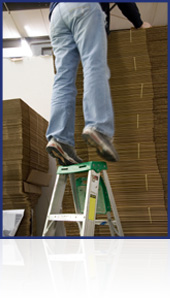 Behavior-based Safety is a method to use positive reinforcement to change unsafe behavior.
Behavior-based Safety is a method to use positive reinforcement to change unsafe behavior.
The system:
- Is employee-based for continuous improvement;
- Analyzes tasks and hazards to identify critical safety behaviors;
- Analyzes behavior based on job observation;
- Uses feedback about safety performance as reinforcement;
- Behavior-based Safety Principles;
- Behavior is the cause of accidents;
- Consequences motivate behavior;
- What gets measured gets done;
- Feedback is essential to improvement;
- Quality is built-in early in the process;
- Conversations change organizations;
- Behavior-based Safety and Integrated Safety Management.
via Safety Training – Safety Guidance Specialists: What is Behavior-based Safety?.

